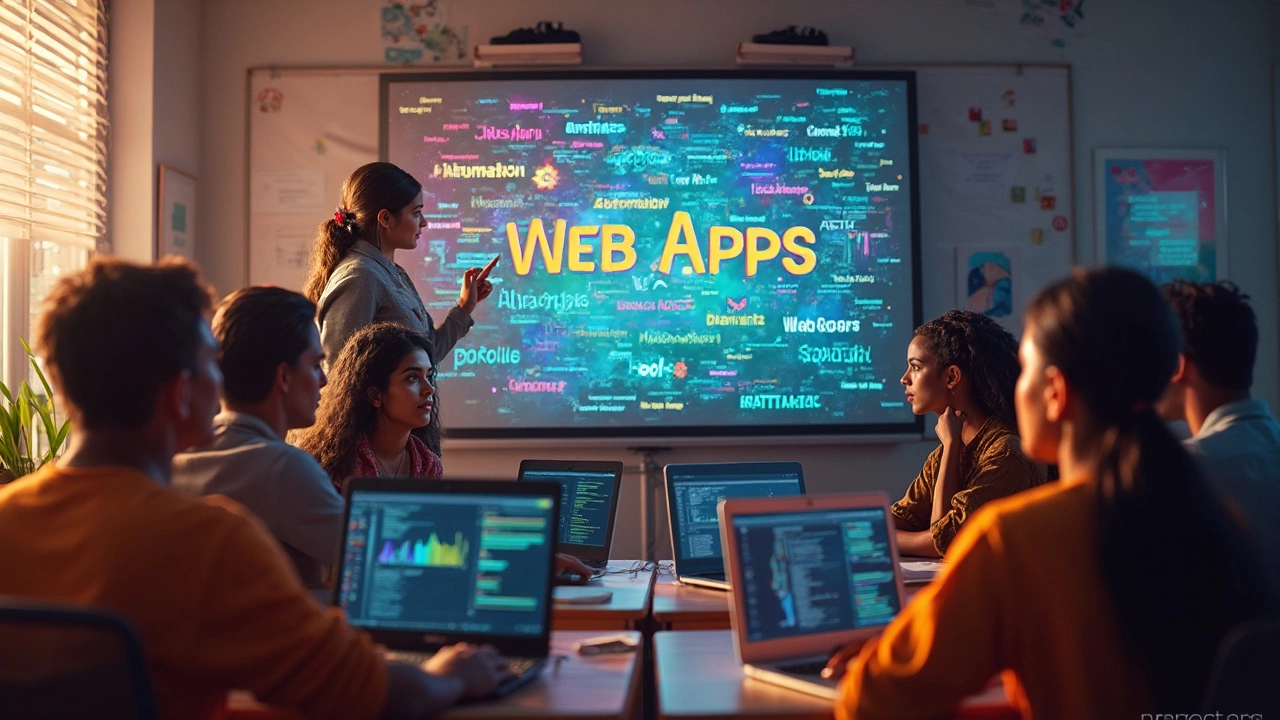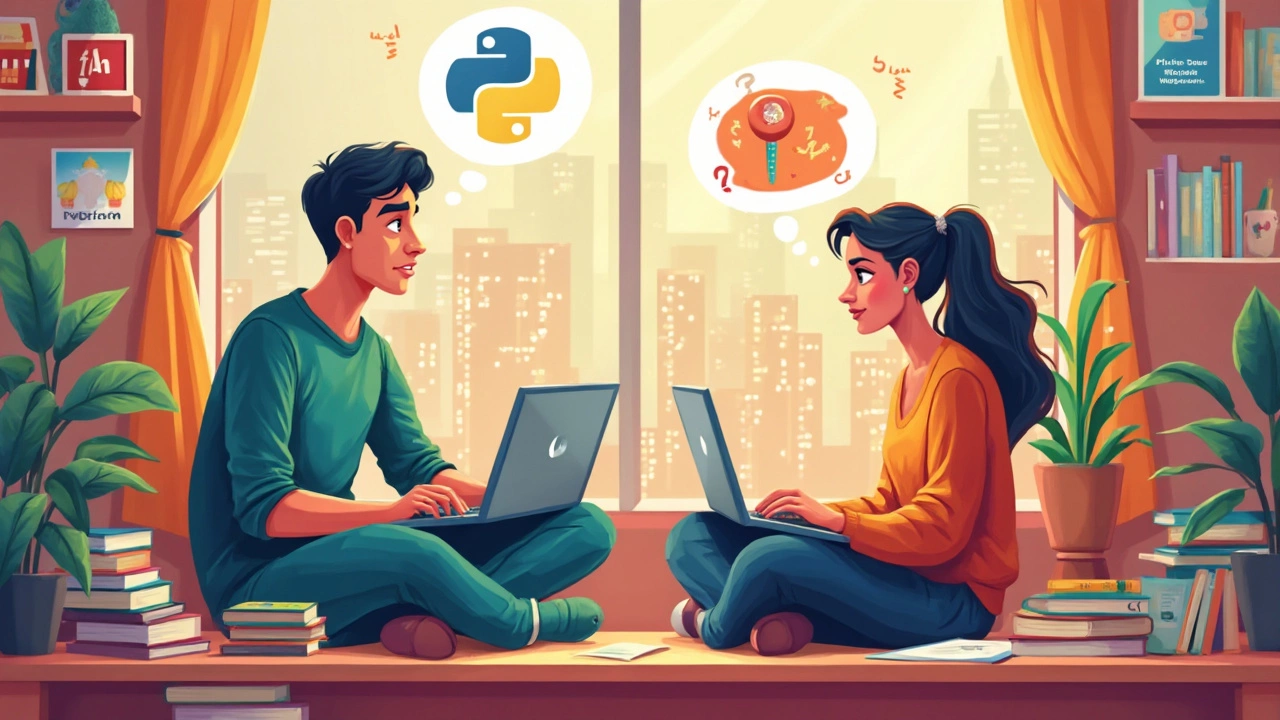You’re probably hearing about Python everywhere—in coding bootcamps, tech job ads, and even from friends messing around with automation scripts. There’s a reason for that: Python is super easy to pick up, and you can use it for almost anything. Whether you want to build websites, analyze data, or just stop wasting time on boring tasks, Python’s got your back.
One of the coolest things? You don’t need to be a hardcore coder to start using Python. Its syntax is close to plain English, which means you spend less time fighting the code and more time building stuff that actually works. Plus, there are literally millions of free lessons, YouTube tutorials, and online classes aimed at beginners.
If you’re wondering what Python is used for, or why it matters in coding classes, you’re in good company. Python powers giant websites, banks, video games, and even NASA projects. So if you’re thinking big, this is a great language to know. Stick around and you’ll get the inside scoop on where Python really shines and how to get started today.
- The Basics: Why Python Is So Popular
- Python in Real Life: What People Build
- Cool Facts and Smart Tips for Beginners
- How to Start Learning Python Fast
The Basics: Why Python Is So Popular
There’s a reason “learn Python” pops up in just about every list of coding tips: this language is made for real people, not just computer geeks. Python first showed up in the 1990s, but it really exploded around 2010 when companies started using it for websites, automation, and handling big piles of data. Google, Netflix, and Spotify all use Python behind the scenes. No wonder it's everywhere.
If you’ve ever opened up Python code, you’ll see right away why people like it. Forget curly braces and confusing symbols—you can actually read most Python code out loud. That helps beginners get started fast and keeps the language friendly for people who use it every day at work.
The best part? The huge Python community. There are tons of open-source libraries (pre-built blocks of code) for almost anything you can think of. Want to make a graph, scrape info from a website, or connect to a database? Someone’s already built a tool for that. You just import it and move on. This saves beginners and pros a massive amount of time.
Python also runs on just about any device—Windows, Mac, Linux, or even a Raspberry Pi. That means you can practice anywhere without special equipment. And with companies looking for anyone who can wrangle data, automate boring stuff, or build simple web tools, picking up python can really open doors.
- Simple and clear syntax that’s easy to learn
- Massive community support and libraries for every project
- Cross-platform—runs on almost anything
- Used by top tech companies and startups
- Perfect for beginners and used by pros
Pretty much, if you're interested in tech, learning Python is a no-brainer. You get a language that's easy to start with and sticks with you all the way into real-world work.
Python in Real Life: What People Build
If you look at what people are actually making with python, it’s kind of wild. Developers, hobbyists, even scientists lean on Python for projects that matter—from billion-dollar businesses to small side hustles.
Here’s a straight-up list of what Python gets used for every day:
- Web Development: Companies like Instagram and Reddit use Python frameworks like Django and Flask to handle millions of users. Fast, easy to scale, and less bugs—that’s why Python is their pick.
- Data Science and Machine Learning: Ever heard of pandas, NumPy, or TensorFlow? These Python tools power big data work at places like Netflix (think movie recommendations) and Spotify (that creepy-accurate music mix).
- Automation: People automate boring stuff like sorting emails, moving files, or scraping websites. You can write quick scripts that save hours, even days, of grunt work. Python’s the go-to language here.
- Game Development: Pygame lets you whip up simple games. Even pros use Python for prototyping game logic.
- Finance and Trading: Major banks use Python for crunching numbers, testing financial models, and even building trading bots.
- Networking and Cybersecurity: Tons of network monitoring tools and security scanners run on Python. When hackers and defenders both rely on it, you know it’s flexible.
Check out these real examples of Python in the wild:
| Use Case | Company / Project | Impact / Fun Fact |
|---|---|---|
| Web App Backend | Handles over 1 billion users using Django | |
| Machine Learning | Netflix | Python helps recommend shows based on what you watch |
| Game Prototyping | EA Sports | Python scripts speed up game engine testing |
| Automated Trading | J.P. Morgan | Python runs trading bots moving millions |
| NASA Data Crunching | NASA | Used for processing huge sets of space data |
You’re not just stuck with one thing, either. Once you learn Python, you can jump from building a website to wrangling data or even making a dumb little game for your friends. That mix of practicality and fun is exactly why Python shows up in so many real projects.

Cool Facts and Smart Tips for Beginners
If you’re just getting into Python, here’s something you probably didn’t know: kids use it in school science projects, but so do Google engineers and NASA scientists. That’s how flexible it is. In fact, Python ranked as the world’s most popular programming language on the python index (PYPL) for the last three years in a row. It’s not just hype—it’s everywhere.
Here’s something surprising: Instagram, Pinterest, and even Spotify all use Python in their main apps. A huge part of Netflix’s recommendations? Powered by Python’s data tools. Python also runs robotics, games, chatbots, machine learning, and even helps automate daily office work—like moving files or scraping info off websites. It’s wild how far you can go.
| Company | Python Use |
|---|---|
| Core search, AI, scripting | |
| Backend server code | |
| NASA | Data analysis, automation |
| Spotify | Recommendation algorithms |
| Website backend |
Now, for tips you’ll actually use as a beginner:
- Don’t try to memorize everything. Python is meant to be read and understood, not memorized. You’ll get more out of playing around with code and Googling stuff as you go.
- Start with real-world projects, even small ones like a calculator or a to-do list. You learn faster when the code does something useful or fun.
- Use free resources: Automate the Boring Stuff with Python (the book and site) is basically a cheat code for new learners. Tons of practice and simple explanations.
- Stick with Python 3—Python 2 is old news and not used in newer projects. All the new tutorials and jobs expect you to know Python 3.
- Try online code playgrounds like Replit and Trinket. Skip worrying about software installs when you just want to try out ideas.
If you ever get stuck, remember that Stack Overflow, Reddit’s r/learnpython, and Python Discord are packed with folks who love helping out. Everyone gets stuck, even pros. Getting comfortable with not knowing stuff is honestly half the skill in programming.
How to Start Learning Python Fast
If you’re itching to get started, you’ll be relieved to know you don’t have to buy expensive textbooks or spend months before seeing results. The best way to learn Python is by doing. Dive in and actually write code, even if it’s just printing messages or doing simple math operations at first.
The internet is loaded with free resources. Sites like Codecademy, Coursera, and even YouTube have beginner-friendly tutorials. A lot of people start with the official Python site, python.org, which has downloads and clear guides for newbies. If you prefer hands-on practice, apps like SoloLearn or Mimo let you code right from your phone.
- Set up Python on your computer using the installer from the official site—it works for Windows, macOS, or Linux.
- Try out interactive websites. For example, Codecademy and freeCodeCamp let you run code right in your browser, so you don’t worry about messing up your computer.
- Start with simple exercises like printing “Hello, world!” and basic math. As you get more comfortable, try to automate a daily task—like renaming files or sending an email.
- Join a coding class or community. Reddit, Discord, and Stack Overflow all have groups where you can ask ‘dumb’ questions and get real answers from people who’ve been there.
Here’s a tip: stick to one project at a time. If you chase too many ideas, you’ll burn out quick. Try solving small problems—like making a calculator or keeping track of your habits—before moving into bigger stuff like web apps or data science.
And since python is so popular, don’t sweat if you get stuck. Someone else has already had your exact problem, and there’s probably a ready-made answer a quick search away. Follow this path, and you’ll be coding real stuff faster than you think.



